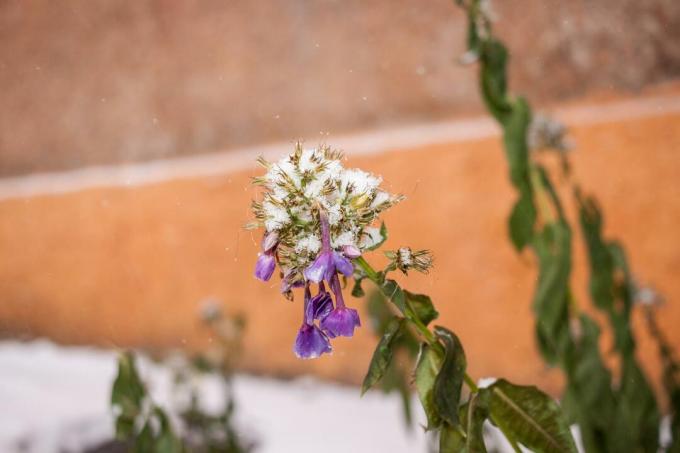The phlox is quite easy to care for, but a cut from time to time won't do any harm. We explain what to consider when cutting phlox.

Before the new shoots in spring, the old stems have to be removed. But when exactly? And how was that again with the pruning of smaller phlox species? The most important thing about pruning the Flame flower (phlox) you will find out below.
Cut phlox
When pruning the phlox, there is an essential difference between creeping and upward phlox species. Both should be pruned once a year, but the procedure and purpose are very different. Large species like the Hohe Stauden-Phlox (Phlox paniculata) are only pruned in winter when their shoots have died. Small species, on the other hand, are pruned while they are growing in order to beautify their growth habit.
Cutting phlox: the right time
When pruning, a distinction is made between large and creeping species of phlox. In the following you will find out exactly what the differences are.
Cutting phlox: cutting back large species
Large species include tall perennial phlox and large-leaved phlox (Phlox amplifolia). After the stems of large species of phlox have completely withered in late fall, they can be cut. However, it is better to let them stand over the winter and only cut them off in spring just before the new shoots begin. The dead stems provide a nice winter quarters for many an insect. It is also possible to cut back the inflorescences after the flowers have wilted. However, this measure is not necessary. It only prevents the plants from sowing themselves.

Cutting phlox: cutting back creeping species
Creeping phlox species include the cushion phlox (Phlox douglasii) and the carpet phlox (Phlox subulata). These can be cut back immediately after flowering, i.e. in early summer. This is how the evergreen phlox species sprout fresh. With a little luck you can even look forward to a second flower afterwards.
Cutting phlox: instructions
In general, flame flowers do not need to be cut at all. Cutting back phlox is only a beauty measure. In the case of deciduous phlox species, you can put the withered shoots from the previous year on a stick, i.e. cut them off directly on the ground. Wilted inflorescences are only cut back to where the leaves begin. Wintergreen phlox species such as the cushion phlox can be shortened by two thirds after flowering in spring to stimulate new growth.
More about Care of phlox you can find out here in our special article on the subject.
